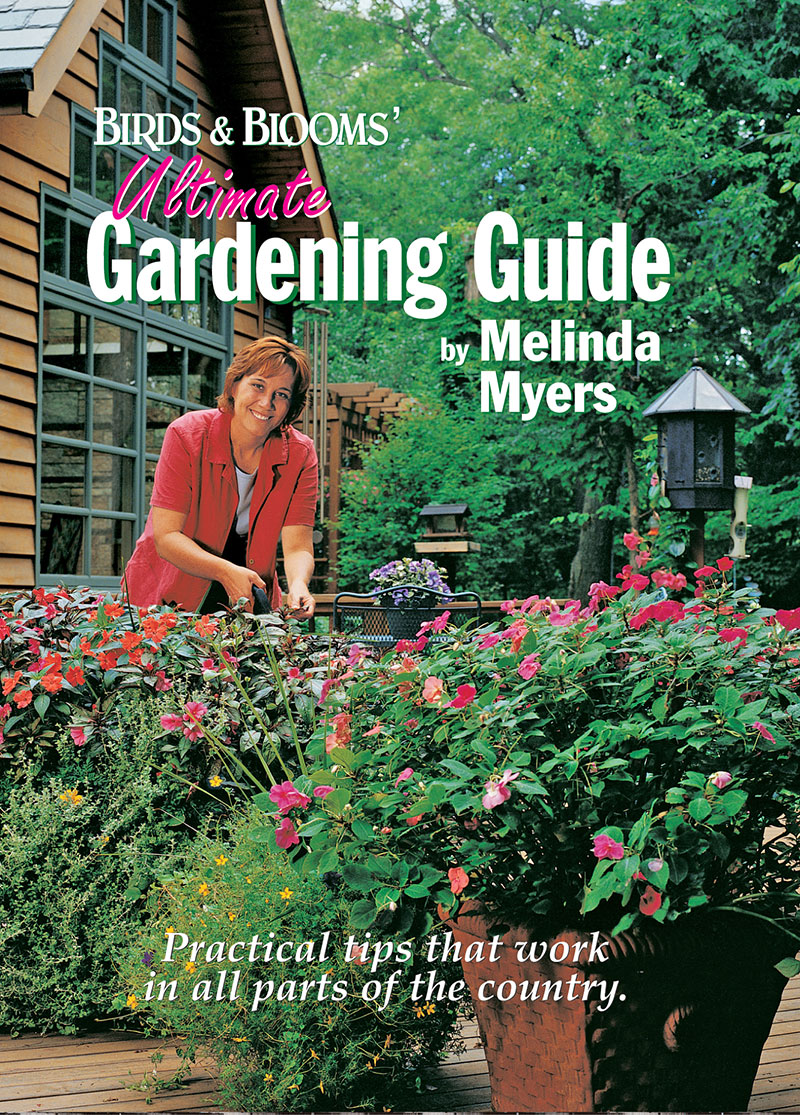
November
Flowers & Ornamental Grasses
Flowers & Ornamental Grasses
- Incorporate shredded fall leaves into vacant gardens. They will break down over winter, improving the soil. Cover with a layer of leaves to prevent erosion.
- Shred fall leaves with your mower and mulch the soil. The leaves will help protect the soil from erosion, suppress weeds and improve the soil as they break down.
- Plant spring flowering bulbs suited to your region when the night temperatures are consistently between 40 and 50 degrees and until the ground freezes. Those in the far south need to select bulbs that require minimal chilling or purchase precooled bulbs.
- Those gardening in areas with mild winters can plant pansies, pinks, snapdragons and sweet Williams for winter color.
- Plant freesias outdoors if gardening in zones 9 and 10.
- Continue to water new plantings as needed until the ground freezes. Then drain and store your garden hoses for winter.
- Give perennials a boost by topdressing with compost every 2 years. Spread a 1-2” layer of compost over the soil surface and lightly rake.
- Leave healthy, disease and insect-free perennials stand for winter to increase their hardiness and vigor and provide food for birds and winter homes for beneficial insects.
- Leave the stems intact, plant bulbs near or place markers by butterfly weed, balloon flower and other late emerging perennials. These mark their location and prevent accidental damage in the spring.
- Continue fall clean up. Ridding the landscape of diseased leaves, fruit and annual plants is the first step in pest control.
- Mulch borderline hardy perennials and bulbs after the ground freezes with evergreen boughs or straw for added insulation.
- Gather and save leftover seeds for next year’s garden. Place in an airtight container and store in a consistently cool place like the refrigerator.
- Those in cold climates need to empty and store annual, glazed and terra cotta containers for winter. Clean pots now and you’ll save time during the busy planting season next spring.
- Collect, store, and clean garden tools. Organize now for a seamless start to next season.
- Gather liquid fertilizers and pesticides from both sheds and unheated garages. Inventory and store these and other pesticides in a secure location away from pets and children. Keep liquids out of direct sun and in a frost-free location. Move granules to a secure, dry space for storage.
Fruits, Vegetables & Herbs
Fruits, Vegetables & Herbs
- Incorporate shredded fall leaves into vacant gardens. They will break down over winter, improving the soil. Cover with a layer of leaves to prevent erosion.
- Those in milder climates can plant winter crops of lettuce, spinach and other greens in the garden. Use a cold frame or row covers to protect them from cold winter temperatures if needed.
- Mulch carrots, parsnips and turnips as temperatures drop. Then harvest in winter for a tasty treat.
- Continue fall clean up. Removing and disposing of diseased leaves, fruit and annual plants is the first step in pest control.
- Cut fall bearing raspberries to the ground. This eliminates the summer crop but encourages a larger and earlier fall harvest next year.
- Gather and save leftover seeds for next year’s garden. Place in an airtight container and store in a consistently cool place like the refrigerator.
- Those gardening in colder regions need to gather liquid fertilizers and pesticides from both sheds and unheated garages. Inventory and store these and other pesticides in a secure location away from pets and children. Keep liquids out of direct sun and in a frost-free location. Move granules to a secure, dry space for storage.
Groundcovers & Vines
Groundcovers & Vines
- Continue removing and recycling fall leaves from groundcover and planting beds. Large leaves mat down and trap moisture, increasing the risk of disease and winter dieback.
- Make fall cleanup easier. Cover groundcover plantings with netting to capture and remove fall leaves to the compost pile.
Indoor & Holiday Plants
Indoor & Holiday Plants
- Extend the edible garden season by growing an indoor herb or vegetable garden. Plant leafy crops like lettuce and spinach and root crops like radishes as well as many herbs that will survive most indoor growing conditions.
- Save a few or purchase some spring flowering bulbs for forcing this winter. Plant the bulbs and store in a cool 35° to 45° location for 15 weeks to initiate flowering.
- Force fragrant freesia bulbs into bloom. Plant several bulbs in a 6” pot and place in a cool, 55° location, for 45 days.
- Move plants to sunnier locations as day length shortens and sunlight decreases.
- Adjust watering schedules for your indoor plants to match any changes in the indoor growing conditions. This includes tropical and annual plants moved indoors for winter.
- Wrap holiday plants in paper or plastic sleeves to protect them from cold temperatures when transporting them from the garden center or florist to their final destination.
- Extend the care of poinsettias, cyclamen, kalanchoes and other holiday plants with proper care.
- Purchase and plant amaryllis, paperwhites, and hyacinths for holiday gifts and decorations.
- Give houseplants a fresh look by adding a florist pick of cut flowers or a small potted flowering plant to your indoor plants.
- Monitor and manage whiteflies, aphids, mites and any other insects that may have moved indoors on your plants.
- Check houseplants for salt buildup. Scrape off the crusty salt buildup on the soil then leach the soil by watering thoroughly several times at 20-minute intervals.
- Selection is the first step to insuring your Christmas tree remains green and beautiful throughout the holiday season.
- Extend the life of your fresh Christmas tree and maximize your enjoyment with proper care.
- Considering a living Christmas tree this holiday. Plan ahead to insure a successful transition into your landscape.
Lawns
Lawns
- Continue cutting the grass high as long as it grows. Leave the short clippings on the lawn, adding moisture, nutrients and organic matter to the soil.
- Shred leaves as you mow and leave them on the lawn. These also add nutrients and organic matter to the soil. As long as you can see the grass blades through the leaf pieces, the lawn will be fine.
- Northern gardeners can still make their final application of Milorganite low nitrogen fertilizer in early November before the ground freezes.
- Once the mowing season is over clean, sharpen blades and properly prepare your mower for storage.
- Shovel the snow first before applying a plant-friendly deicing salt. You’ll reduce the amount of salt needed and minimize the damage to your lawn.
Trees, Shrubs & Roses
Trees, Shrubs & Roses
- Continue planting trees and shrubs as long as the weather permits. The warm soil and cooler air temperatures help plants adapt more quickly to their new location.
- Once the plants drop their leaves and go dormant, it’s a good time to transplant trees and shrubs that need to be moved and are small enough to handle.
- Continue to water new plantings and evergreens as needed until the ground freezes. Then drain and store your garden hoses for winter.
- Burn off some of those holiday calories with a walk around the neighborhood. Look for trees and shrubs that provide winter interest in the landscape. Make a list of any you want to add to your landscape next year.
- Considering a living Christmas tree this holiday. Plan ahead to insure a successful transition into your landscape.
- Wait for at least a week of freezing temperatures to protect non-hardy roses and other shrubs for winter.
- Install wildlife fencing and barriers and begin applying repellents to protect new plantings, fruit trees and other plants favored by deer, rabbits and voles.
- Regularly monitor and secure fencing and animal barriers that can be dislodged, buried or damaged by winter winds and snow.
- Install wind, sun and deicing salt screens to protect new plantings and sensitive plants from damage.
- Prevent snow load damage to upright arborvitae and junipers. Wrap the plants with bird netting or loosely tie the branches together with strips of cotton cloth.
- Shovel the snow first before applying plant-friendly deicing salt. You’ll reduce the amount of salt needed and damage to your garden plants.
- Avoid damage when adding holiday lights to the winter landscape. Drape the lights over the branches, loosely secure the lights to the stems or use lighted netting.
- Collect, store, and clean garden tools. Organize now for a seamless start to next season.
Categories
Upcoming Live Events
& Webinars
April 27, 2024
Ridges & Rivers Book Festival
Viroqua, WI
Register now
April 28, 2024
Flowering Trees and Shrubs
Ebert's Greenhouse Village, Ixonia, WI
May 1, 2024
FREE WEBINAR
Ornamental Fruits and Vegetables
Register now
May 4, 2024
Garden U 2024
New Richmond, WI
Register now
May 9, 2024
FREE WEBINAR
How to Plant Your Rain Garden
Register now
May 11, 2024
Ask The Plant Doctor Q & A
Ebert's Greenhouse Village, Ixonia, WI
May 12, 2024
Ask The Plant Doctor Q & A
Ebert's Greenhouse Village, Ixonia, WI
May 18, 2024
Ask The Plant Doctor Q & A
Ebert's Greenhouse Village, Ixonia, WI
June 1, 2024
Selecting, Planting, Pruning and Caring for Hydrangeas
Ebert's Greenhouse Village, Ixonia, WI
June 5, 2024
FREE WEBINAR
Under-Appreciated Pollinators
Register now
WATCH ON-DEMAND WEBINARS
Learn More










